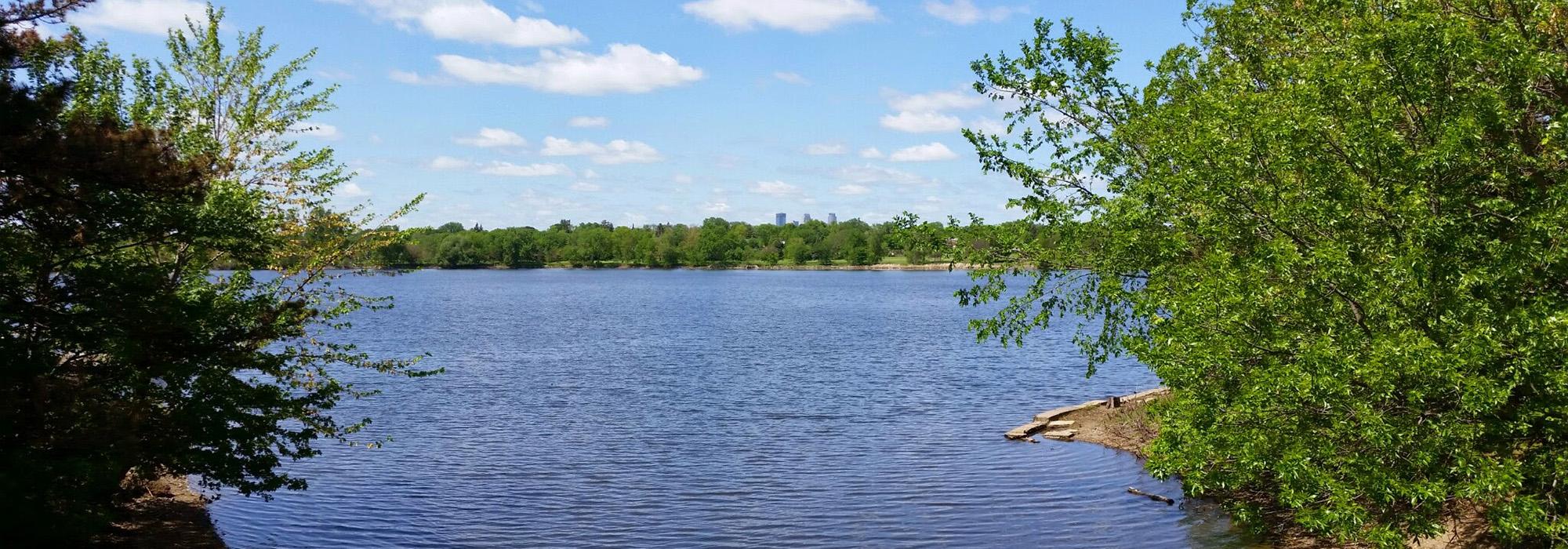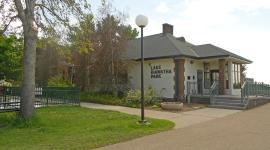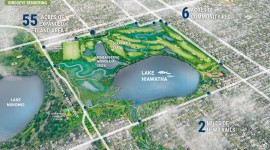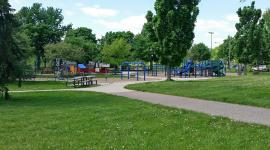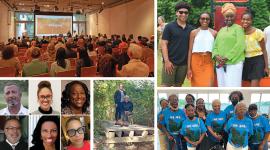Some New Twists at the Hiawatha Golf Club
Is the solution to flooding at Minneapolis’ historic Hiawatha Golf Club to add more water? That, according to hydrologist Andy Komor, Vice President at Pacific Advanced Civil Engineering, is what the Minneapolis Park and Recreation Board (MPRB) is advocating as part of their $43 million plan to reduce the eighteen-hole course to nine holes. The proposed radical redesign of the course, which has particular significance to Black golfers, resulted in the site’s enrollment in The Cultural Landscape Foundation’s (TCLF) Landslide program on March 1, 2022. The MRPB’s consultants, Barr Engineering, did the analysis that underpins the redesign, which aims first and foremost to address severe flooding at the course and in the adjacent neighborhood. Komor, who is volunteering his time and efforts, praised Barr’s research as very thorough, but he believes they’ve come to the wrong conclusion. The answer to the flooding problem, he says, is less water, not more. And his approach, Komor avers, would save taxpayers millions of dollars.
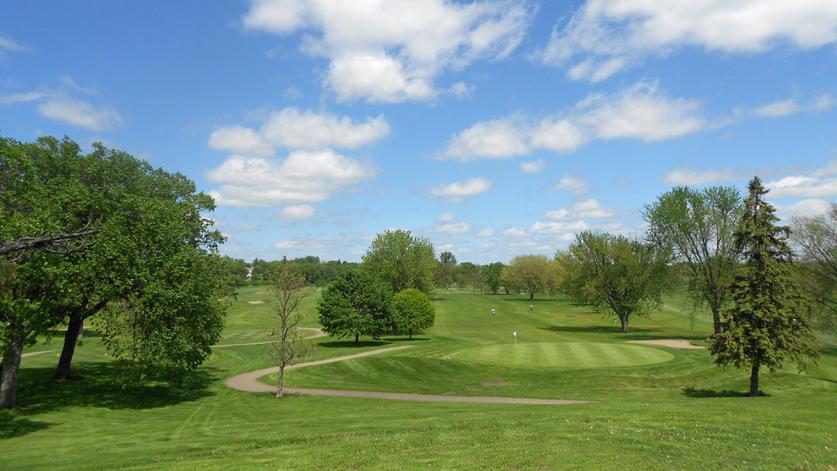
That’s the message Bronze Foundation President Darwin Dean, Komor, and other Hiawatha Golf Club advocates delivered to MRPB President Meg Forney, Park Superintendent Al Bangoura, and Assistant Superintendent Michael Schroeder at a Zoom meeting convened by Forney on Thursday morning, March 17. Dean and the group then hosted a public Zoom presentation, live streamed on YouTube, on Monday, March 21, where Komor detailed his findings. Along with Dean and Komor, the public presentation included remarks by pro golfer and golf course designer Tom Lehman, landscape architect Tom Oslund, and TCLF’s Charles A. Birnbaum.
This appears to have made an impact. The nine-member MPRB, seven of whom are newly elected, seemed on course to approve the nine-hole option for which they would then seek funding. However, on March 23, in a bold and laudable move, Pres. Forney advised Dean that he and his team would be permitted to make a fifteen-minute presentation to the MPRB on April 6. Later that day, the commissioners voted in favor of a motion to hold a hearing on April 20 about Hiawatha.
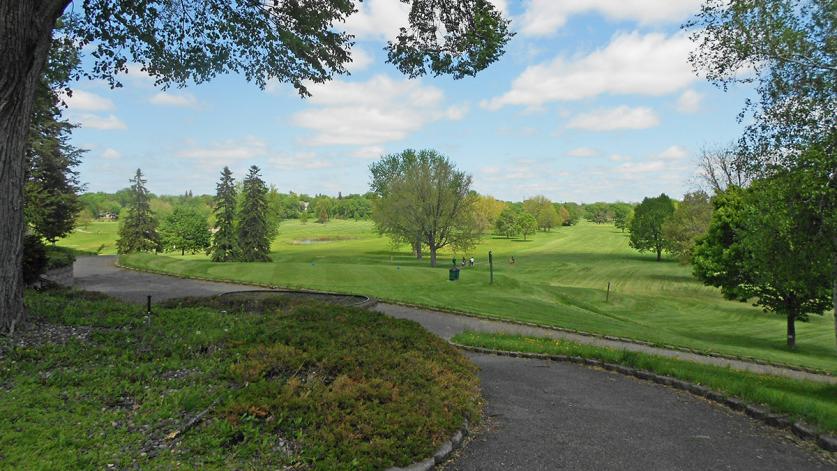
The language of the motion, however, is perplexing. It reads, in part: “Recently, advocates for retaining the current 18-hole configuration of Hiawatha Golf Course have asserted that historic and cultural values should be carrying a greater weight in determining a direction for the golf course. …While they stress the need for retaining 18 holes on a historic basis, they have offered no alternatives to the ground water pumping issues that underline the need for a new direction for the property. Where the master plan attempts to balance recreation and ecologic opportunities on the property, no such balance is being represented by advocates voicing a preference for retaining an 18-hole configuration for the golf course.”
Are we to assume that it is the responsibility of every person who raises concerns about the Master Plan to also provide solutions to the site’s ground water pumping issues? Additionally, the motion continues: “The advocates also fail to direct attention to other issues raised by the public during the master planning process.” So, should we assume members of the public who voice specific concerns about the course, but “fail to direct attention to other issues raised,” face similar admonition?
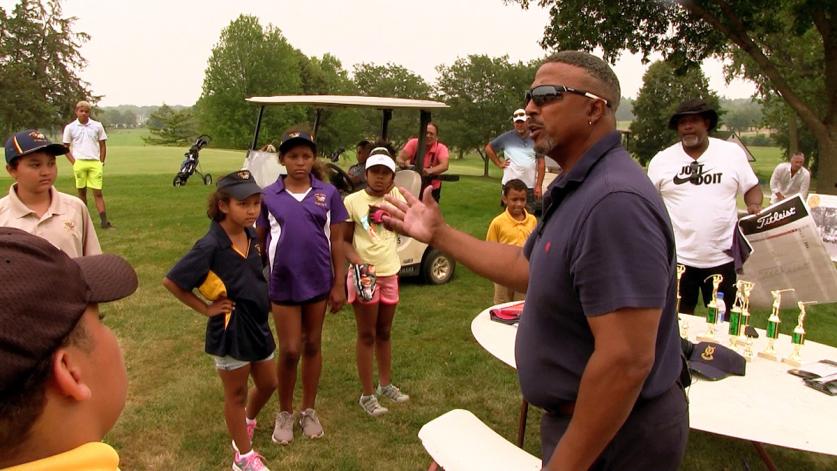
Admittedly, the MPRB is in a tough position. The impetus for the redesign began following severe flooding at the course and the adjacent neighborhood in 2014. As detailed on the MPRB website, there have been numerous meetings and hearings, public support for nine-hole plan has been orchestrated, and several of the new commissioners campaigned on redesigning Hiawatha. Now, the MPRB may have to pivot. What direction they’ll take remains to be seen. Of note, Komor’s concept addresses what is listed as the Community Advisory Committee’s stated top priority, “protect homes from groundwater intrusion.” The reality is that the new commissioners are not necessarily obligated to support the nine-hole plan if Komor’s interpretation of Barr’s hydrological analysis holds. They could ultimately rally behind a plan that addresses the flooding problem and rehabilitates the eighteen-hole course, which is potentially individually eligible for listing in the National Register of Historic Places (it is already eligible as part of the Grand Rounds Historic District).
Fortunately, Dean and Team Hiawatha have been consistent and emphatic in offering to work with the MPRB to find a solution that addresses the hydrological issues and retains the integrity of the historic course – a rare example of a significant cultural landscape associated with African Americans that has not been erased (unlike many others nationwide). They’re helping to fulfill one of the board’s community involvement goals: “Through increased participation, MPRB is better able to deliver projects, programs and initiatives representative of community needs, interests and resources.” One note of caution, this is still in the conceptual phase. A rehabilitation plan that retains the site’s integrity would need to be developed, and, assuming state or federal funds are used, that design would need to withstand a review pursuant to Section 106 of the National Historic Preservation Act. The good news is that the MPRB’s leadership is creating a space for discussion; fresh ideas are being put forward and some dialogue is taking place.
That’s a very positive development.



